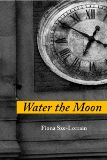July 25, 2010WATER THE MOON
Review by Kristina Marie Darling
Marick Press
P.O. Box 36253
Grosse Pointe Farms, MI 48236
2010, 78 pp., $14.95
ISBN: 978-1-934851-12-8
www.marickpress.com
Fiona Sze-Lorrain’s stunning debut collection of verse, Water the Moon, explores the intersection of personal experience and artistic tradition. By presenting snapshots of contemporary life alongside the works of Van Gogh, Tchaikovsky, and Chopin, the poet offers a nuanced discussion of her attempts to simultaneously inhabit and revise a complex literary heritage. As Sze-Lorrain questions the extent to which to which our Romantic past can remain intact in postmodern world we inhabit, her use of style serves to mirror and complicate these thought-provoking observations. Frequently paying homage to such established forms as the lyric and the ode while subtly contemporizing them, the poems in Water the Moon offer a graceful synthesis of history and modernity, a combination that proves striking throughout.
Sze-Lorrain’s use of couplets, tercets, and quatrains proves especially noteworthy. As the author explores the changing relevance that Romantic art holds for a contemporary audience, she skillfully situates traditional poetic forms within a shifting literary landscape. Often adhering to a given form only to break it near the end of the piece, Sze-Lorrain’s stylistic decisions embody the fascinating tension between old and new that permeates much of her work. She writes, for instance, in “Breakfast, Rue Sainte-Anne”:
…he would also scold me poor foolish girl –
for my morning ritual – lavishing ten euros
at New World Pavilion, an air-conditioned
crystal glass restaurant opposite a bronze Molière,
over such a plain dish, neither novel
nor vintage, that simply costs two yuan
in the rickshaw streets of his old Shanghai.
Throughout such passages, Sze-Lorrain contrasts her speaker’s own aesthetic delights with those of the generation that came before her. Although the narrator finds splendor in both a lavish “crystal glass restaurant” and a “plain dish, neither novel/nor vintage,” she realizes that her predecessors maintained a less expansive definition of beauty. As the narrative unfolds, the poet skillfully matches form with content. In much the same way that the speaker redefines the values that she has inherited, the poet invokes traditional couplets only to re-imagine the form by ending her piece with a one-line stanza. Water the Moon is filled with poems like this one, which prove to be as finely crafted as they are elegant.
As Sze-Lorrain uses form to situate contemporary life within a rich artistic heritage, her work offers fascinating insights into the changing notions of tradition found within today’s global literary community. The poems in this collection traverse worlds, taking the reader from the streets of Paris to the shores of Tibet and a scene from the Spanish Civil War. In much the same way, Water the Moon negotiates a variety of competing artistic legacies, including French prose poetry, Greek odes, and works written after Gertrude Stein. By creating such juxtapositions, Sze-Lorrain suggests that one’s literary past remains at once personal and global, an intersection of the universal and the particular. She writes, for instance, in “Snapshots from a Siamese Banquet”:
A bronze iconography of “Buddha preaching on reason” stands adjacent to the volcanic slate basin. Both palms face outwards, his fingers point upwards. A sign reads, “Please put the soap on its bed of seaweed at all times.”
* * *
You hold the Milky Way
between two hands
where drunken prawns float
above starry-eyed carrots.
Here Sze-Lorrain gracefully pairs hybrid writing with the ode, ultimately reconciling two disparate poetic traditions. In doing so, she locates personal experience within this nexus of aesthetic influences. Just as the speaker’s voice remains at once individual and representative of a shared artistic heritage, the imagery of the piece itself transitions from the character’s own small room to the seemingly infinite “Milky Way.” Water the Moon is filled with eloquent works like this one, which represent both personal experience and a broader historical consciousness. All points considered, Fiona Sze-Lorrain’s collection is a wise and accomplished debut.